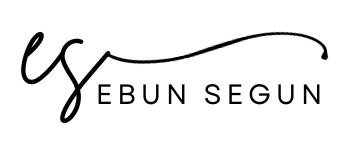
Creating a professional development plan, when done well, is like creating a custom recipe for your favourite dish. It contains a list of all the ingredients, utensils, and instructions needed to make this dish. Like a recipe, a professional development plan is your step by step plan of how to use your ingredients (your skills and career path) to go from where you currently are to where you want to be. There are several ways to write a professional development plan, but here are a few critical parts that should be thoroughly thought about:
- Long term career goals
- Strengths & weaknesses
- Career path
- Role models
- Level up plan / short term goals
Long Term Career Goals
Your long term career goal is like the finished product of the recipe. After following the instructions of the recipe, using the right utensils, and putting your ingredients together, what dish would you like to have? This dish represents your long term career goals. Think carefully about your dream career and what you see yourself doing long term. Professionally, what is your end goal or what career do you think will bring you the most fulfillment? You can have more than one long term career goal and sometimes, they may intertwine beautifully and be so unique to you. List them out as a first step.
I’d like to add that you should never feel like you need to be tied to a specific long term career goal that you set at a different phase of your life. Your long term goals can evolve as you grow and gain more clarity on what you want to do. Personally, my long term career goal has evolved from wanting to be a doctor to having a hybrid career in medicine and technology. As of this moment, my long term career goal is to become a neurosurgeon who writes books and teaches about personal development. If your long term goals have changed, evaluate and embrace this change, and WRITE IT DOWN!
Personality Type: Strengths and Weaknesses
Knowing your personality type/traits along with how your life experiences have shaped you gives you more insight on what your strengths and weaknesses are. There are several free tests available online to determine your personality type, like Myers-Briggs Type Indicator or the Enneagram Personality Test, (paid versions give a more detailed report). Having a good understanding of your personality type, strengths, and weaknesses informs you of some of the ingredients and utensils you have in hand. What are your strengths, skills, and competencies? How have these come to play in your daily life and in your career so far and how can you harness them to get to where you want? What are your weaknesses and areas you can improve? Are there certain weaknesses that you MUST work on in order to get what you want? Outline these in your professional development plan.
Career Path
In this section, list out your career path from where you are currently to where you want to be in the long run. Think of all the roles you want to occupy as you move forward in your career. For example, a software developer’s career path might look like the following:
Junior developer -> Senior Developer -> Technical Lead -> Director of department -> VP of engineering -> Founder/CEO of tech firm
Bear in mind that this might look a bit different for self-employed individuals. Your career path might be in the form of the different stages of your business as it grows. For example:
Start a business in your city -> Introduce new product -> Expand to two locations -> Expand product range -> Expand to 5 countries -> Own a chain of businesses
If you have regular assessments (quarterly, bi-annually, annually) at your workplace, keep track of the feedback you receive at every stage. If you are self-employed, ask for feedback regularly from your clients and write it down.
Bear in mind that your career path may not always be linear. Some people have to pivot industries, get formal training, or maybe return to school. Your career path may also have “branches” to account for long term career goals with multiple components, for example like mine.
Role Models
In creating a recipe, sometimes we might want to incorporate some elements of another (someone else’s) recipe we’ve come across. Your career role models ideally should be people that have done something or embody a quality that you admire. Considering the long term goals you just wrote down, who are your career role models? What qualities do you admire about them? What have they done that inspires you? It’s great to have role models in your specific field, but don’t limit yourself.
For example, my high-level role models are Ben Carson, Chimamanda Adichie, and Oprah Winfrey. I say high-level because I like to have a visual of people at the topmost level of the things I’m aspiring towards, but that is not to say that I do not have many more people around me (and far off) that I admire and gain inspiration from. Your role models do not have to be uber famous people, they just have to be people who have done the things you aspire to do or embody a quality you admire.
Level Up Plan
After figuring out your career path, build out your level up plan by breaking down each step in the career path into short term goals; divide your year into quarters and assign these short term goals to each quarter (this is a suggestion, you can also figure out what short term timeline works better for you but don’t be lazy). For each goal you set, define and measure KPIs.
For example, if your goal is to learn a new programming language, a good KPI would be to develop a new program using the language or contribute to an open source software by a set date. An important part of setting short term goals is to keep them SMART: Specific, Measurable, Achievable, Realistic and Time bound.
Just like that, you’ve created your recipe! The beautiful thing about a professional development plan is that it makes you more intentional about your career – you now know exactly what you want and you’ll be more focused to work towards it: Write the vision and make it plain.
For the ease of following this guide, I created a simple (and I mean really simple) template that you can customize. If you’re like me and you like to write on physical paper, here’s a printable version. If you want a digital copy, download this editable template (made up of a “big picture” template of long term goals, career path, strengths, weaknesses, and role models AND short term goals template which can be duplicated as many times as necessary).
Finally, feel free to contact me if you need help in completing this exercise or need help figuring out what you want out of your career and remember to share this with people if you’ve found this useful!



This is brilliant you make it sound like a piece of cake.
Thanks! I really wanted to simplify the process.